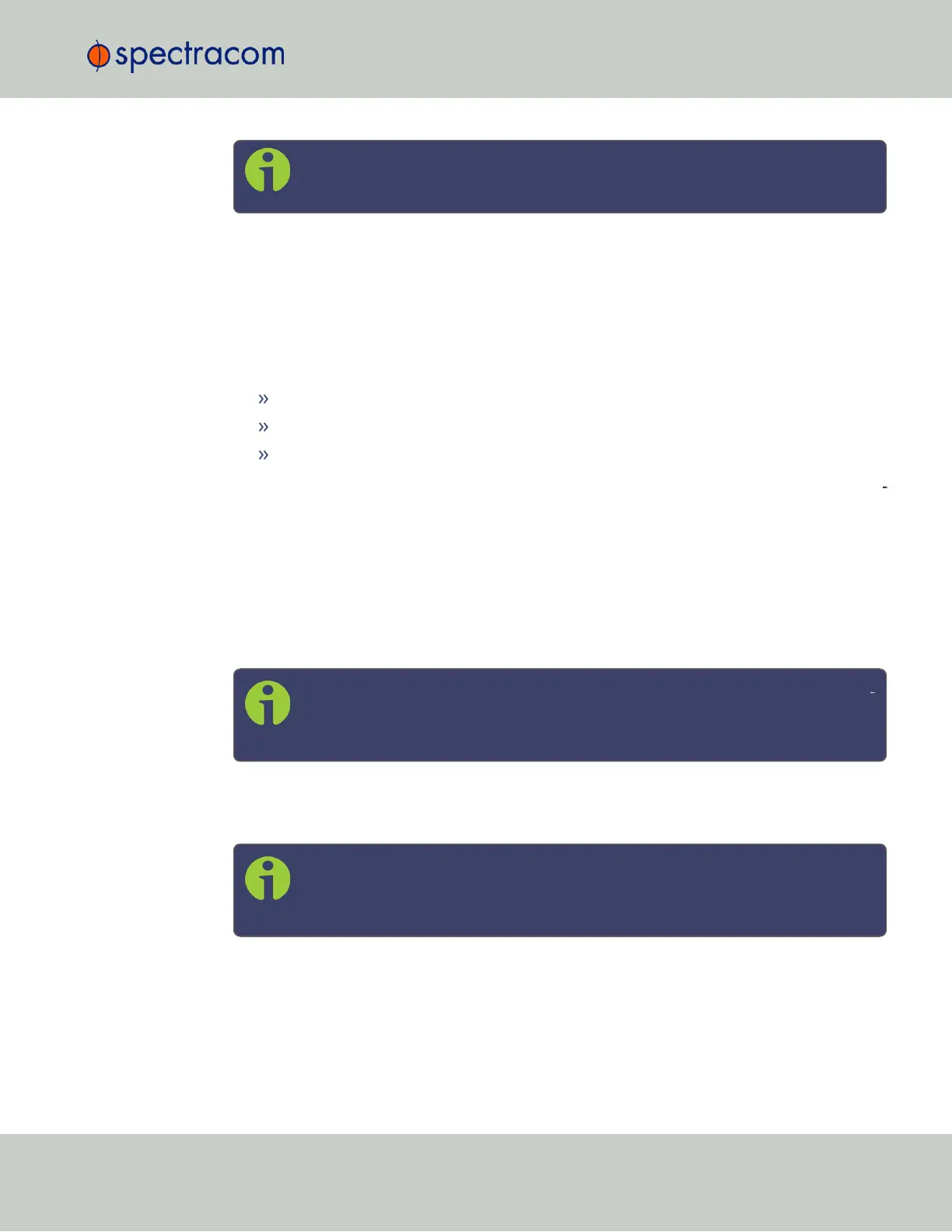Note: Host disciplining is NOT supported by SecureSync units that are equipped
with a Rubidium oscillator.
The Oscillators Settings page provides the user with some control of the disciplining process.
This page is also used to configure the length of time SecureSync is allowed to remain in the
Holdover mode when all references are lost.
3.5.1 Oscillator Types
SecureSync units are available with different types of internal oscillators:
TCXO (Temperature-Compensated Crystal Oscillator)
one of two different types of OCXO (Oven-Controlled Crystal Oscillator) oscillators, or
one of two different types of Rb (Rubidium) oscillators.
The two different types of OCXO oscillators are a precision OCXO oscillator and a high-pre
cision (low phase noise) OCXO oscillator. The two different types of Rubidium oscillators are a
precision Rubidium oscillator and a low-phase noise Rubidium oscillator. All of these internal
oscillators are self-calibrating and can be disciplined to a 1PPS input reference for maximum
accuracy.
Because of its high degree of stability, the Rubidium oscillator provides the greatest ability to
extend the hold-over period when input references are not present. Extending the hold-over
period allows the unit to provide very accurate and useable time stamps and a 10 MHz output
for a longer period of time once time synchronization has been lost.
Note: Oscillators are installed at the factory, in accordance with order spe
cifications; an oscillator cannot be swapped/retrofitted later in the product life
cycle (with the exception of repairs).
The Rubidium oscillator is atomic in nature but requires no MSDS (Material Safety Data Sheet).
For additional information on oscillator accuracies, see "10 MHz Output" on page24.
Note: External Oscillator: It is possible for an external oscillator to be locked to
SecureSync's 10MHz output via an external PLL, with the lock state of the
external PLL monitored by SecureSync. Contact Spectracom for more information.
3.5 Managing the Oscillator
CHAPTER 3 • SecureSync User Reference Guide Rev. 23
195
